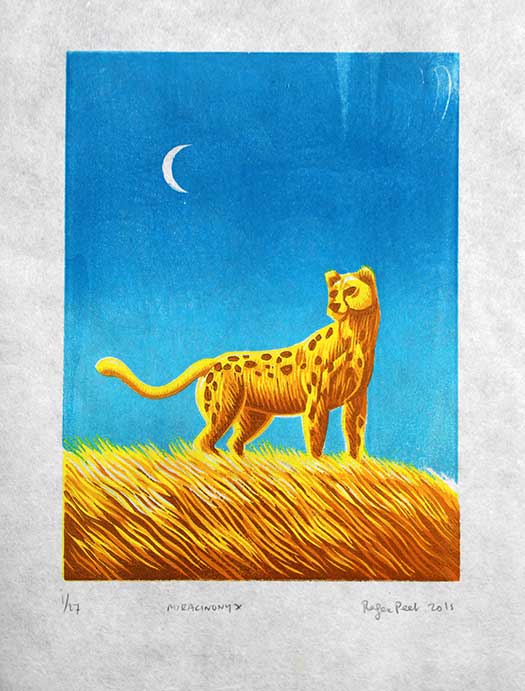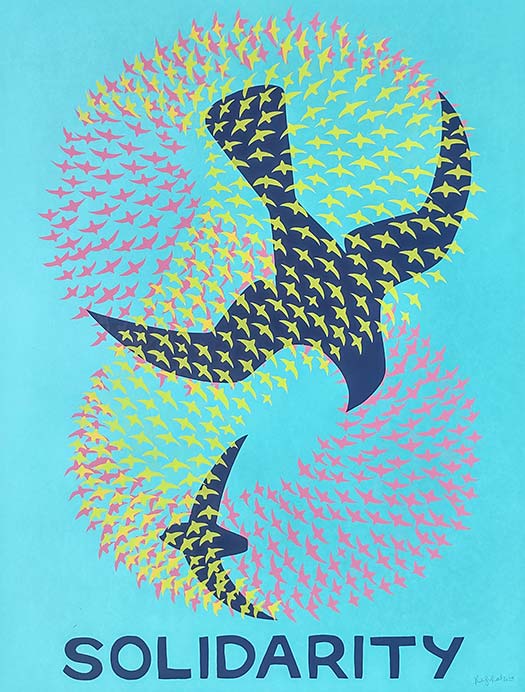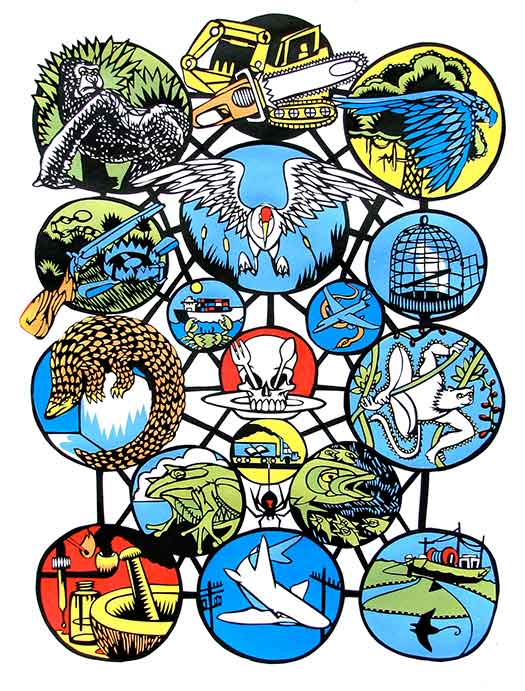A doomed past doesn’t mean a doomed future. The weight of history doesn’t bear down forever- people shrug their burdens off. I’ve got two new prints (here and here) up on the site right now inspired by the time I spent last year in one of the world most dangerous and damaged countries, the Democratic Republic of Congo. They’re attempts to talk about the history and the present of the Congo in the same breath- to mash together Congo’s terrible colonial history of enslavement and exploitation with its contemporary struggle to rise above the shattered landscape and become a place of possibility for all.
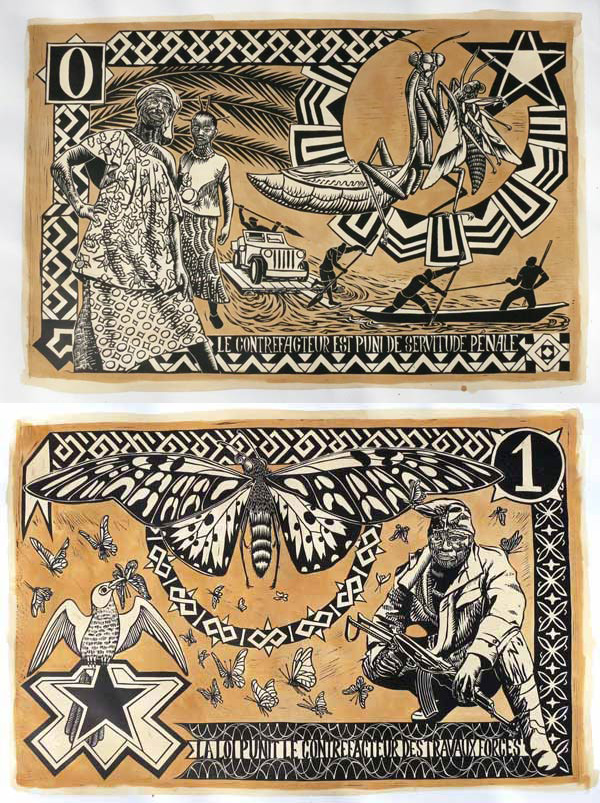
I thought I’d share a bit of the process of making these prints, specifically where some of the imagery came from, and a bit of the thought process as well.
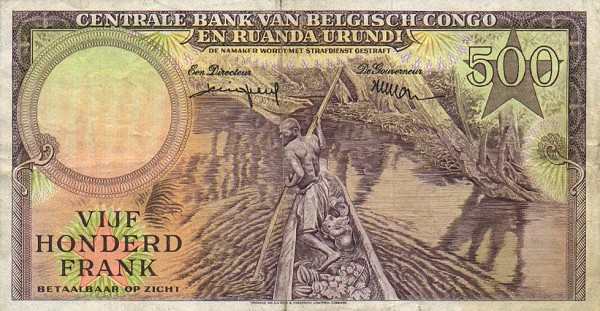
I based the layout of the images on banknotes from Congo’s colonial era. I’m interested in the design of money, and what it says about who’s issuing it. Something that I’ve noticed about money issued under colonial rule is that it tends to use imagery of the endemic flora and fauna of the colonized landscape alongside imagery of the colonized cultures that inhabit that landscape, providing them equal worth, which is, of course, obviously lesser than that of the great sweeping cloak of civilization that the colonizers are so generously drawing across the landscape.
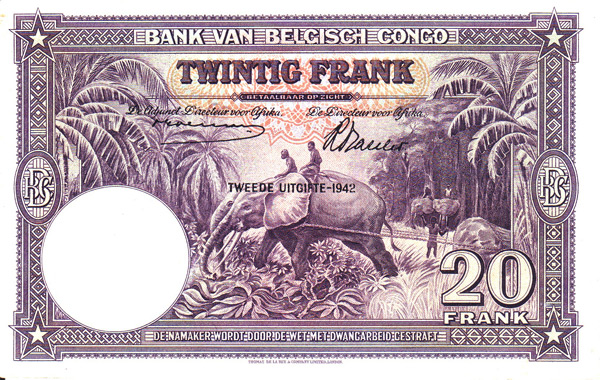
What those peoples and those creatures are supposed to do after Europe arrives is to provide a pleasantly exotic backdrop to the work of civilized industrial society. They’re explicitly not supposed to have their own desires and priorities, and they are relegated to decorative motifs on the walls of the consulate. They are no longer actors, they are scenery, and that goes for everyone- Chiefs, warriors, and wise women as well as elephants, leopards, and forests. They become false versions of themselves. That’s why these prints are called “Counterfeit”. The text on each print refers to text on the money pictured above- in French and Flemish (Belgium’s two languages) it says “the counterfeiter is punished with forced labor” or “the counterfeiter is punished with penal servitude”. The real counterfeiters, however, are the colonial powers, building fake versions of their own societies on top of people who have been doing pretty well without their version of “civilization”.
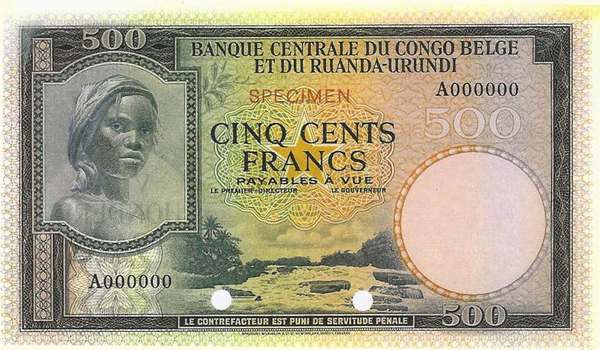
The people in these prints are drawn from photos I took while I was in Congo. The woman and child are based on an encounter in a village on the Lomami river. While our big canoe was parked and we were off in the village market amassing supplies, I was asked by a group of women standing on a hill of rice husks to take their photo. I obliged, and then my arm was grabbed by a very striking older woman who asked that I take her picture as well. As I raised the camera, she struck the most defiant and powerful pose I’ve ever seen a person take. Her gaze was a stake. She towered over the world. A young girl mugged behind her, spidery locks raking the clouds.
The man with the gun is Koffi, a guard at the camp of the project for which I was volunteering. Koffi is a park ranger, trained by the Congolese military to patrol the country’s forests and protected areas and provide security in the face of an exploding trade in ivory and bush-meat. In the forest, he was a joyful giant- every encounter with mammal or reptile or bird brought a beatific expression to his face. He described crawling through mud-flats to watch elephants, and stalking okapi through low, close forests of thin saplings, stepping gently like them, following them as they browsed. We found the huge skin of a python in the bushes on the side of the trail and stretched it out between us, both our eyes widening, moonlike, as we stepped further and further apart to stretch the freshly-shed translucent skin to its full length. We both bent to sniff it at the same time.
I designed and cut the blocks for these prints during a month at the Caldera Arts Center in eastern Oregon- you can see a bunch of process photos here.
For more information on the project I was volunteering with, and an amazing blog about science, nature, and culture in the Congo, check out Bonobo in Congo.
You can also read an interview with me about my time in Congo on international conservation news site Mongabay.com




